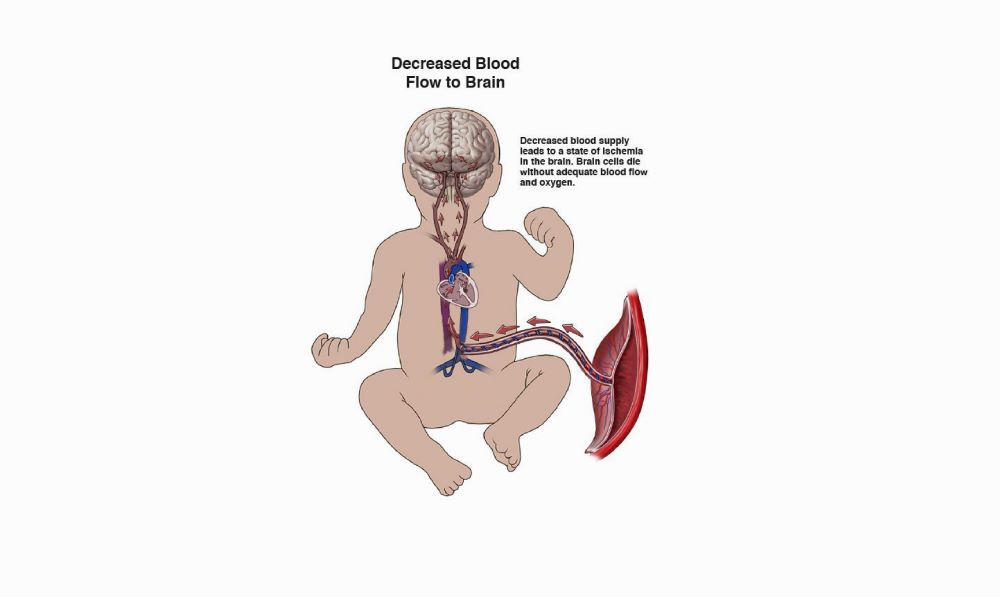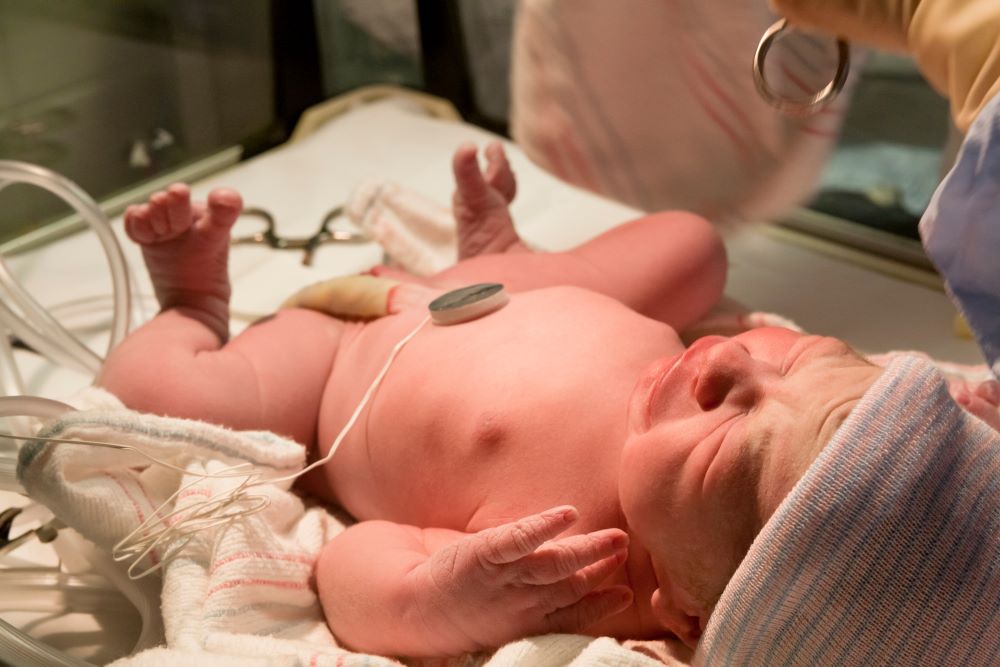Last Updated on January 3, 2025 by Michelle Wan
Birth asphyxia is a serious medical condition that occurs when a newborn does not receive adequate oxygen before, during, or immediately after birth. This lack of oxygen can lead to significant complications, affecting the baby’s brain, heart, and other vital organs. In severe cases, birth asphyxia can result in long-term disabilities or even death.
Understanding birth asphyxia is critical for parents, caregivers, and medical professionals to recognize the signs, address its causes, and ensure prompt treatment. This article explores what birth asphyxia is, its causes, symptoms, diagnosis, treatment options, and potential long-term impacts.
Causes of Birth Asphyxia
Birth asphyxia can occur due to complications that disrupt the baby’s oxygen supply. Common causes include:
Umbilical Cord Complications
- Cord Prolapse: The umbilical cord slips into the birth canal ahead of the baby, compressing it and restricting blood flow.
- Nuchal Cord: The cord becomes wrapped around the baby’s neck, limiting oxygen supply.
Placental Issues
- Placental Abruption: The placenta detaches from the uterine wall prematurely, cutting off oxygen and nutrients.
- Placenta Insufficiency: The placenta fails to deliver adequate oxygen during pregnancy.
Prolonged or Difficult Labor
Extended labor can place stress on the baby, reducing oxygen levels and the use of tools like forceps or vacuum extractors may inadvertently cause trauma that impacts oxygen flow.
Maternal Conditions
High blood pressure, preeclampsia, or infections during pregnancy can compromise oxygen delivery to the baby.
Delayed or Inadequate Medical Intervention
Failing to monitor fetal distress or delaying a necessary cesarean section can lead to preventable asphyxia.

Symptoms of Birth Asphyxia
The symptoms of birth asphyxia can vary based on its severity and when it occurs. Signs immediately after birth include:
- Low Apgar Scores: Scores below 7 at one minute and five minutes indicate potential distress.
- Difficulty Breathing: The baby may require resuscitation or oxygen support.
- Abnormal Skin Color: A bluish or pale complexion suggests inadequate oxygen.
- Poor Muscle Tone: A limp or floppy appearance at birth.
- Seizures: Early seizures may indicate brain damage caused by oxygen deprivation.
Diagnosing Birth Asphyxia
Prompt diagnosis is critical to minimize the impact of birth asphyxia. Healthcare providers use the following methods to assess the condition:
Umbilical Cord Blood Gas Analysis
Measures pH levels, oxygen, and carbon dioxide in the baby’s blood to determine the severity of oxygen deprivation.
Apgar Score Assessment
Evaluate the baby’s appearance, pulse, grimace, activity, and respiration at one and five minutes after birth.
Neurological Examination
Identifies signs of hypoxic-ischemic encephalopathy (HIE), a type of brain injury caused by oxygen deprivation.
Imaging Tests
- MRI or CT Scans: Assess potential brain damage.
- EEG: Detects abnormal brain activity, such as seizures.

Treatment Options for Birth Asphyxia
The treatment for birth asphyxia depends on its severity and when it is detected. Early intervention is key to minimizing long-term complications.
Resuscitation
Babies with severe birth asphyxia may require immediate resuscitation to restore oxygen flow. This may involve suctioning, ventilation, or chest compressions.
Therapeutic Hypothermia
Cooling the baby’s body or brain reduces inflammation and limits further damage to the brain and organs. This treatment is most effective within six hours of birth.
Oxygen Support
High-flow oxygen or mechanical ventilation ensures the baby receives adequate oxygen levels.
Medications
Drugs to manage seizures, stabilize blood pressure, or support organ function may be administered.
NICU Care
Babies with severe asphyxia often require monitoring and support in a neonatal intensive care unit (NICU).

Long-Term Impacts of Birth Asphyxia
The severity of birth asphyxia determines the extent of its long-term effects. Some babies recover fully, while others may face lifelong challenges, including:
Cerebral Palsy
A group of disorders affecting movement and muscle coordination.
Cognitive Impairments
Learning disabilities, memory problems, or developmental delays.
Epilepsy
Seizure disorders may develop due to brain injury.
Behavioral Issues
Challenges with focus, attention, or social interactions.
Hearing or Vision Loss
Sensory impairments may occur if specific areas of the brain are damaged.

Preventing Birth Asphyxia
While not all cases of birth asphyxia can be prevented, careful monitoring and timely medical intervention can significantly reduce risks. Prevention strategies include:
- Regular Prenatal Care: Identifying and managing maternal health conditions during pregnancy.
- Fetal Monitoring: Using continuous heart rate monitoring during labor to detect signs of distress.
- Timely Intervention: Performing emergency cesarean sections or other necessary procedures promptly.
- Proper Training: Ensuring all medical staff follow established protocols for labor and delivery.
Medical Negligence and Birth Asphyxia
In many cases, birth asphyxia is preventable with proper medical care. Negligence by healthcare providers can lead to unnecessary complications and injuries. Examples of medical errors include:
- Delayed recognition of fetal distress.
- Failure to perform a timely cesarean section.
- Improper use of delivery tools like forceps or vacuum extractors.
If your child’s birth asphyxia was caused by medical negligence, you may have grounds for a legal claim to seek compensation for medical expenses, therapy costs, and long-term care.

Seeking Legal Help for Birth Asphyxia
At Thomas & Wan LLP, we understand the profound impact birth asphyxia can have on families. Our experienced attorneys specialize in birth injury cases and can help you secure the resources your child needs for their care and development.
We offer:
- Free Consultations: To discuss your case with no obligation.
- Thorough Investigations: To determine whether medical negligence occurred.
- Compassionate Representation: Supporting your family every step of the way.
Birth asphyxia is a serious condition with potentially lifelong consequences, but timely medical care and proper legal support can help families navigate the challenges ahead. Understanding its causes, recognizing the signs, and taking preventive steps are crucial for protecting newborns during labor and delivery.
If you suspect medical negligence contributed to your child’s birth asphyxia, contact Thomas & Wan LLP today for a free consultation. Let us help you secure justice and the support your family deserves.




